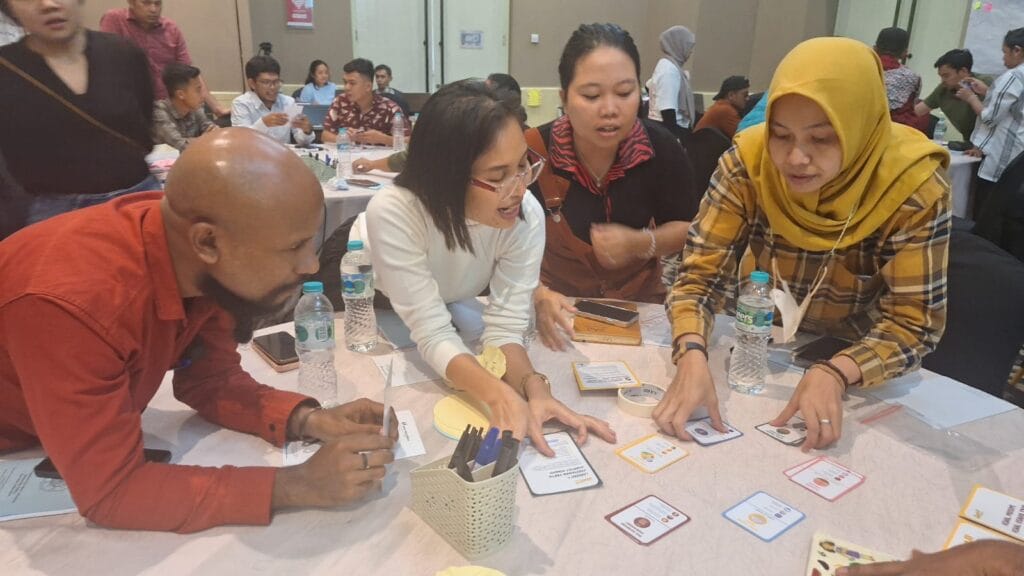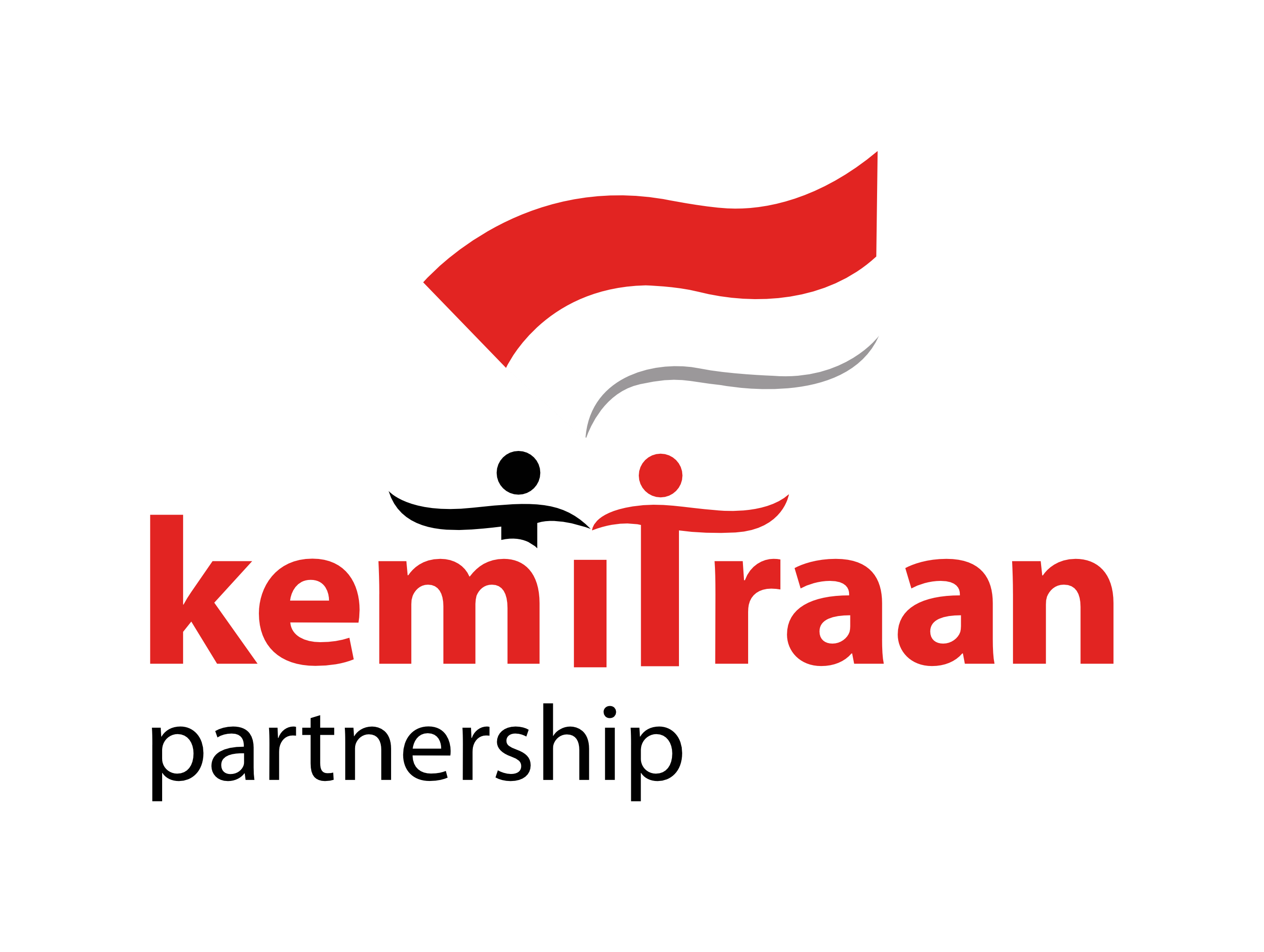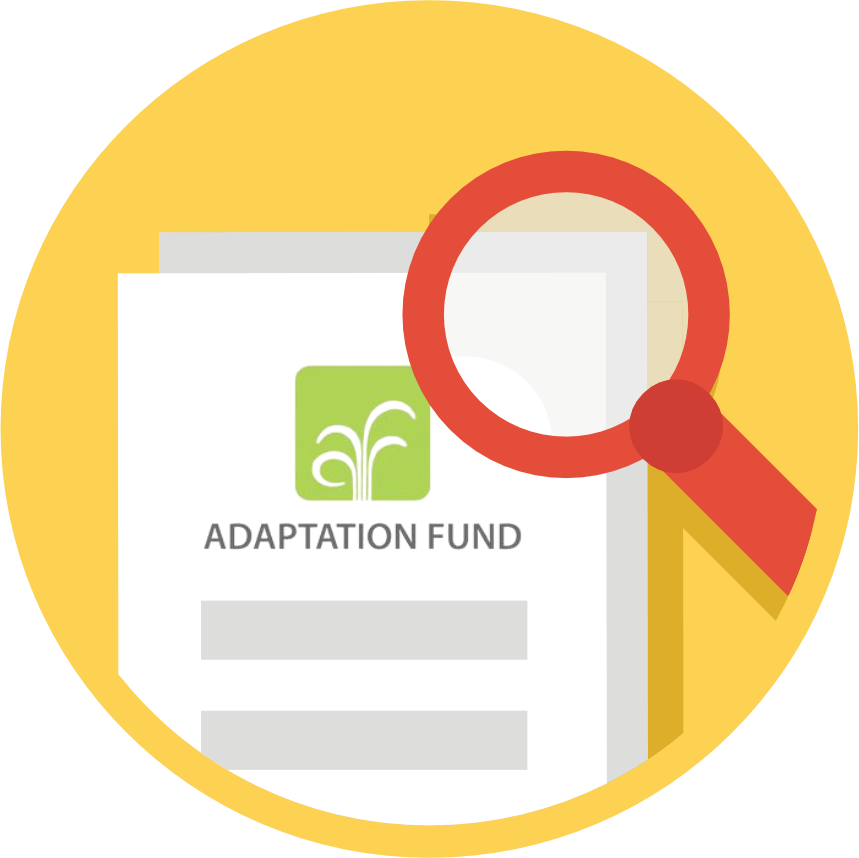
JAKARTA – KEMITRAAN together with 10 local CSOs through the Estungkara program since 2022 has provided assistance to indigenous peoples in 7 provinces in Indonesia, and food issues are one of the focuses to support food independence and security. In the process, assistants are needed who not only master the technical aspects, but also the substance in facilitating activities in various community discussion forums to achieve optimal results.
For this reason, KEMITRAAN together with Terawang Indonesia Institute held a training on the use of an instrument called Sisi Bulat for facilitators from 10 local CSOs which was held on May 15-16, 2024 in Jakarta. The Sisi Bulat method tested in this training is the result of a participatory qualitative study in Southwest Sumba from 2018 to 2020, to mitigate the threat of annual hunger and find the concept of food sovereignty.
“In community assistance, erratic cultural transitions make us need to prepare communities to be ready to be shocked and not become complacent. The community needs to be involved as the determinant of the root of their own problems,” explained Prof. Laksono from Terawang UGM in his presentation.
Sisi Bulat is short for Cyclic Hunger Month Alert (Siaga Siklik Bulan Lapar). This method was developed to address the problem of hunger in Southwest Sumba. Famine usually occurs at the beginning of the rainy season around January, when food reserves are depleted for planting capital that coincides with traditional activities such as Pasola, Nyale, marriage, death and so on.
Seeing this, famine mitigation is carried out by harmonizing the natural cycles, distribution and consumption of farm products with the patterns of natural, social, economic and cultural cycles that require appropriate social contracts. This is experienced by the indigenous community of Rendu Butowe, Nagakeo, East Nusa Tenggara Province.
“In our assisted village, every August the community is very busy with various traditional events, ranging from adult circumcisions, weddings, and not to mention if there is a grief event, so food will run out quickly in this season,” said Sisilia Wunu, Assistant to the Rendu Butowe Indigenous Community.
Sisilia’s experience shows that custom also has an influence on community food systems. Sisi Bulat is designed to enable indigenous people to identify and understand the changes in their communities and find solutions as mitigation measures.
Training participants were invited to determine their own issues to be discussed using the Sisi Bulat tool, both related to the issue of violence against women, the economy, and disability, which was divided into 4 groups. In each group, participants were invited to play 3 games, namely quartet cards, snakes and ladders, and seasonal calendar. After that, the activity continued by filling out an independent action plan and policy brief as advocacy material, according to the results of the discussion during the game.
In each stage of the game, participants can actively discuss topics that arise in the game, and share experiences when assisting in their respective communities. In this case, Sisi Bulat helped participants to identify the problems that occurred. For example, in group 2, participants discussed economic issues, especially women in the China Banteng Community who lack money to meet their needs, and this condition is different from the indigenous people in Southwest Sumba.
After looking at the seasonal calendar, it was found that there is a correlation between traditions such as Chinese New Year, Cap Go Meh and the need to spend money for community members. In addition, household financial management is often the burden of women, but sometimes they do not have full rights in making decisions. Therefore, the existence of cooperatives in the midst of Chinese Benteng women is considered to be the right solution to overcome this. The seasonal calendar also sees the need to develop other economic potentials to increase income, especially during the months of tradition and children’s schooling.
“Sisi Bulat is very interesting, especially for us as community facilitators. Being physically present in the community is not enough, so this tool can help in exploring problems and mapping solutions from the perspective of the community itself,” said Desmond, a facilitator of the To Kulawi indigenous community, Sigi Regency.






